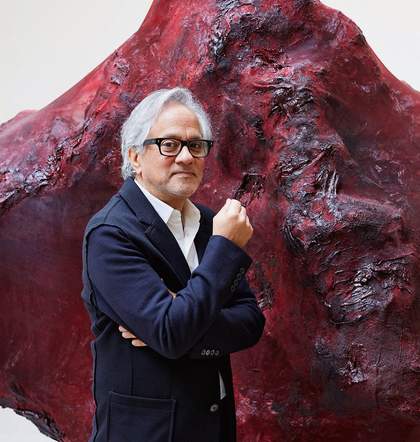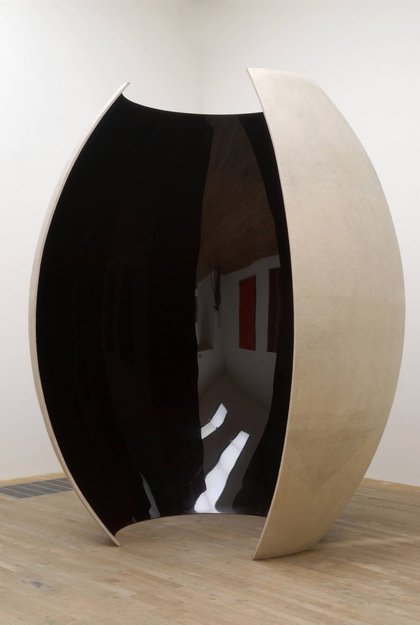
© Anish Kapoor, courtesy Lisson Gallery, photo: Jack Hems
TATE ETC. You are more widely known as a sculptor, but during lockdown you were making drawings and paintings. Can you tell us about these new works, and why you made them?
ANISH KAPOOR I have made paintings over the last 35 years and more. It is an ongoing enquiry which forms part of my studio practice.
ETC. At Tate Britain this autumn we are showing a selection of your works on paper from the 1980s. Were the motivation and ideas behind these pieces different to your new work?
AK Drawing is a wonderful way of bringing into consciousness. It is as if the directness of the process allows access to otherwise less recognised information.
ETC. Is there a close relationship between the more intimate and solitary practice of drawing and painting, and your more public sculptural projects?
AK Sculpture can also have intimacy and directness. For me the task is to work from what I feel and not from what I know.
ETC. One consequence of the coronavirus pandemic might be that we can rethink who art is for. Do you think that radical change has the potential to affect the way we think about the value of art in society?
AK Things change only when change is inevitable, i.e. when a previous mode becomes obsolete. I see no sign of that.
ETC. Recent global stories on racism have rightly refocused the minds of many, including art institutions. You have spoken in the past about the racism that you have personally experienced. What changes would you like to see happen?
AK Black Lives Matter has brought into focus the cultural value of all those who are different amongst us. The art world has in its stupid way given token voice to artists from China, artists from Africa, etc. This is a disservice to these artists and their creative impulse. Where they come from is irrelevant. We know that from the late 19th century onward the creative force in art has come from the individual. It therefore is an abuse of the inventive force of the artist to credit their creativity to their background culture. The fact that they are Chinese, African, black or a woman for that matter is irrelevant.
Tate, MoMA in New York, and other museums give token representation to artists from ‘around the world’ while maintaining the fiction in the way they show their collections and in the way they collect that the ‘masters’ are white and male.
This has to end, and now.
ETC. If there is such a thing as a ‘new normal’, what are you most looking forward to?
AK I have no idea.
A selection of works on paper by Anish Kapoor are included in the display Sculpture of the 1980s at Tate Britain, until 21 March 2021. Anish Kapoor at Houghton Hall runs until 1 November.

